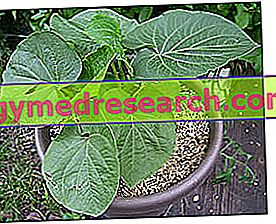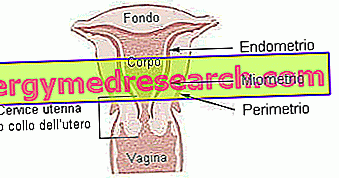Kava Kava: What is it?
Kava Kava is the name given to the underground parts (roots and rhizome) of Piper methysticum Forst., An erect shrub of about 3 meters, cultivated in the regions of Polynesia and Oceania. Belonging to the Piperaceae family, the same as the pepper present on our tables ( Piper nigrum ), the plant owes its name to Piper, which in Latin means pepper, and to methysticum (which intoxicates).

Property of the Kava - Kava
The Kava - Kava has anxiolytic, sedative, hypnotic, anticonvulsant, muscle relaxant and local anesthetic properties (the aqueous extracts reduce the sensitivity of the mucous membranes of the mouth). All these properties are widely documented in the literature, and have also been demonstrated with double-blind studies, meta-analyzes and systematic reviews. From these studies it emerges that the anxiolytic - sedative properties of kava kava are to be attributed to active ingredients renamed kavalattoni or kavapironi, such as kavaine (1-2% of the drug), dihydrokavaine (0.6-1%), methysticin (1.2 -2%) and dihydromethystine (0.5-0.8%). The same active ingredients are used to standardize commercially available kava kava extracts, which should contain at least 3.5% kavapironi, calculated as kavain. Often, however, significantly higher concentrations are reached, in the order of 30-60%, for a total of 60-150 mg of kavalactones per tablet. Very interesting thing is that the sedative properties of kava kava seem to be separated from any side effect at the central level; the extracts, in fact, do not seem to be addictive, physical and psychic dependence, nor to cause a reduction in memory or reaction time; on the other hand, they exhibit therapeutic efficacy comparable to conventional drugs (benzodiazepines). These features led the German E commission to recommend kava kava in the treatment of nervous anxiety, states of excessive tension and insomnia. Kava kava extracts can also be helpful in combating stress and rebalancing the emotional and mood spheres in the presence of nervousness and conflict within the couple. Not surprisingly, researchers have shown that these extracts increase the activity of a brain neurotransmitter, called GABA, which helps to give a sense of relaxation.
Safety and side effects
From the examination of the literature available to date, it emerges that the use of kava kava is associated with a low incidence of side effects. At therapeutic dosages, the use of the drug seems risk-free, except for a percentage between 1.5 and 2.5% of patients, in which the intake of kava kava causes allergic reactions, gastrointestinal problems, headache or dizziness. On the other hand, chronic abuse of kava kava (dosages higher than therapeutic ones for long periods) can induce heavy side effects on the skin, eyes, liver and heart. The use of Kava Kava preparations should not exceed three months.
It is also important to remember that the tranquilizing action of Kava Kava is enhanced by the simultaneous intake of alcohol, which is why it is also contraindicated in small doses.
For some years now, the marketing of Kava Kava extracts in the form of supplements has been banned in Italy, in the wake of reports, mostly from Switzerland and Germany, about possible hepatotoxic effects of the drug. This risk could be due to the congenital absence, which can be registered in particular population groups, of enzymes responsible for the metabolism of some components of the drug, the presence of sophistications with aerial parts of the plant, or the use of kava kava extracts containing high concentrations of kavalattoni, but poor in glutathione. This tripeptide, whose integration takes place in the form of acetyl-cysteine, plays a crucial role in the hepatic detoxification processes of various substances, including drugs such as paracetamol; the reduced availability of glutathione, resulting in the increased metabolism of these substances, can induce hepatic damage, even quite serious. Once again it is fascinating to note that in the plant Piper methysticum glutathione and kavalattoni are in a ratio close to 1: 1, a ratio that moves considerably in favor of kavalattones in some ethanol or acetone extracts of kava kava; the phytocomplex, or the rich mine of substances present in a vegetable source, once again demonstrates a more balanced and safe action than the single active ingredients that it can isolate. If kava kava extracts are used, a practice absolutely contraindicated in the case of liver diseases, it could therefore be useful - under medical advice - to combine acetyl-cysteine simultaneously.



